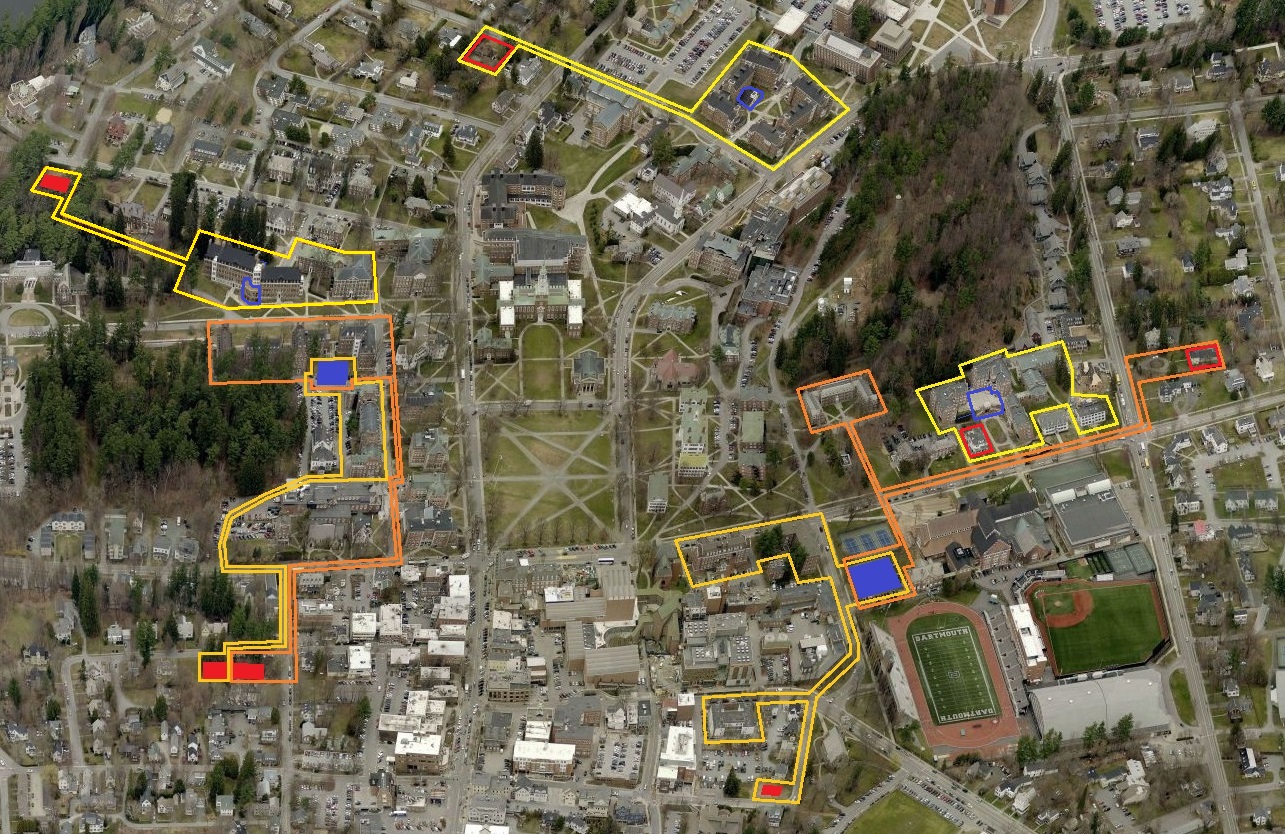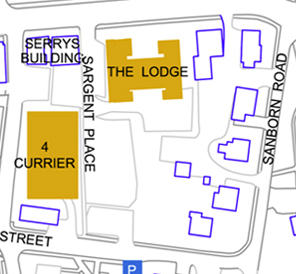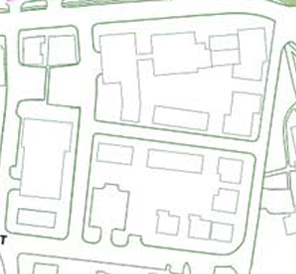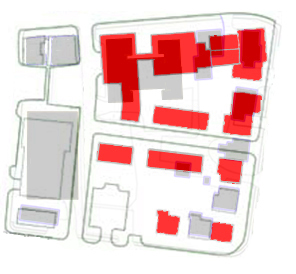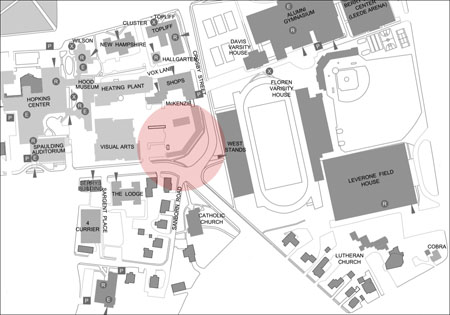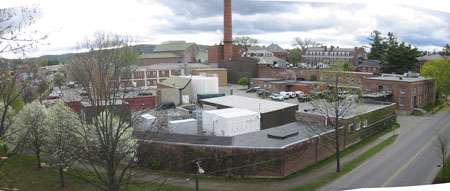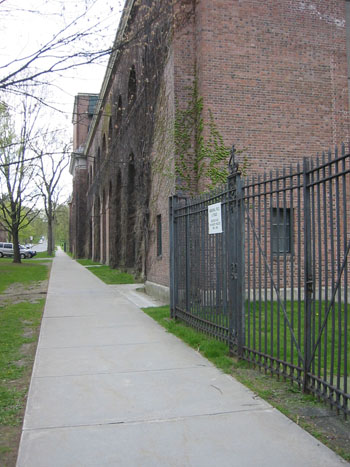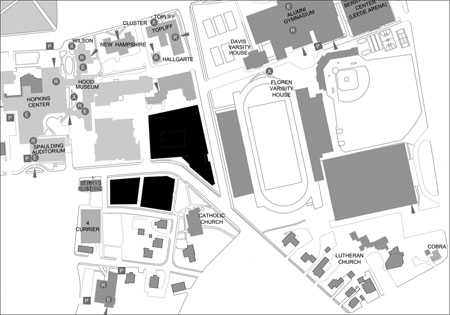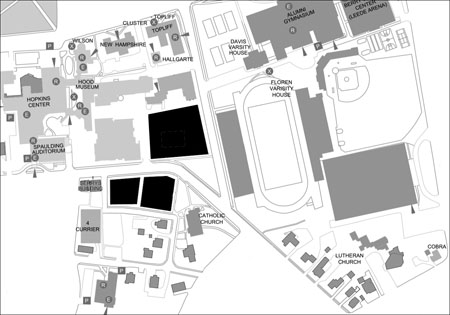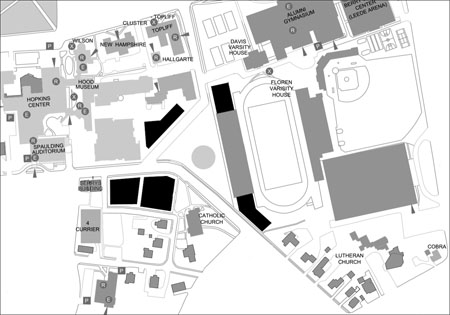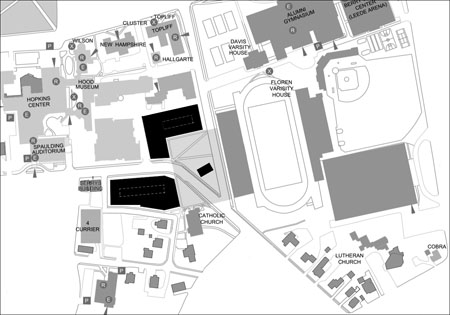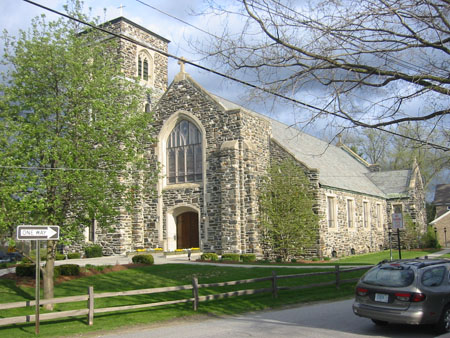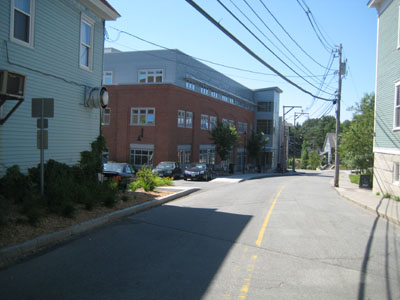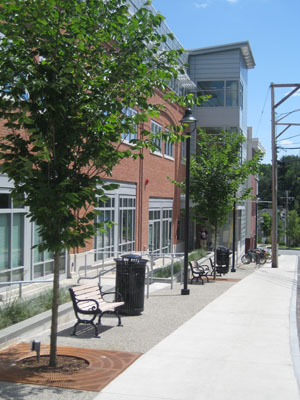-
One might be surprised at paucity of info out there on the demolition of a part of the Hood Museum and the construction of a large addition. The D has a demolition photo from the Green taken last fall. Curbed.com has a post with two post-demolition photos. (See also the set of fascinating photos of the architectural model at Radii Inc.)
-
Metropolis does have a story on the Hood. These are excerpts:
Dartmouth first began seriously mulling over the Hood’s fate in 2001, when it commissioned a speculative study by Rogers Marvel Architects. In 2005, it commissioned another by Machado Silvetti, the architectural firm that designed the Hood’s newest neighbor, the Black Family Visual Arts Center. Then in 2010, it commissioned yet another study, this time by Centerbrook, the practice that Charles Moore cofounded afterparticipatory process, which put users on a level playing field Moore Grover Harper. None created the visual presence — that new front door — that Dartmouth administrators were looking for.
The college began soliciting proposals from a broader pool of architects. A selection committee, including faculty and administrators, winnowed down a short list. In the end, four architects were selected to be interviewed. John Scherding, director of campus design and construction, vividly remembers the TWBTA proposal:
“All of us in the room felt it was brilliant. They were the only firm that suggested disconnecting the Hood from Wilson Hall, allowing Wilson to stand proudly on the corner of the Green. They were the only firm that showed a strong identifiable front entrance to the building, infilled the courtyard to provide program space, and really strengthened the north-south axis. It was a very powerful and simple concept that satisfied all of the needs.”It thoughtfully preserves the gallery spaces (one exemplary detail: To preserve the windows along the staircase, and the dance of light along the walls, TWBTA will convert some of the windows into light boxes of stained glass) and will likely improve the museum experience in many fundamental ways.
-
The sestercentennial celebration website is up. The wordmark makes some interesting typeface choices. The unique “250,” which is set in a type that might be based on Bodoni, includes the most arresting element: a numeral “2” whose diagonal (neck?) is partially erased. The numeral “5” is partially hidden by the “2,” but there is no explanation for the missing bit of the “2.” Is it meant to look like the imperfect printing of an eighteenth-century pamphlet? It looks a bit like a stencil. In any case, the “Dartmouth” on the second line is set in the official Bembo (standard Bembo, not the Yale-only version), and the third line (“1769-2019”) is set in a sans serif font.
-
The sestercentennial will involve a year-long program of events (President’s message) created by a planning committee seeking to meet a number of goals.
-
Here’s a clever little film about an interesting story: Goudy & Syracuse: The Tale of a Typeface Found.
-
Interesting insignia decisions here: the midcentury Institute of International Studies in California was acquired a few years ago by Middlebury College (Wikipedia). In 2015, Middlebury “introduced a brand identity system that embraces the full breadth of its educational endeavors by placing the Middlebury name on each of its schools and programs” (MIIS page). And what a varied collection of institutions it is, including summer schools, conferences, and academic programs. The unified identity is based on a shield. I don’t know about the Midd shield: the globe looks like it’s from a different design language, from a 1960s U.N. brochure. The chapel touches the top of the shield. The hills, because they meet the edges of the shield, read as the sleeves of a gown or as curtains. Maybe this is because the eaves of the chapel are shown as angled bars floating free on the clouds.
-
The Institute is the only Middlebury institution that gets a truly distinctive shield, a variation “that replaces the Green Mountains of Vermont and Old Chapel with the historic Segal Building from the Monterey campus and the year of the Institute’s founding” (MIIS page).
-
A Kickstarter project for Design Canada, “The first documentary chronicling the history of Canadian graphic design and how it shaped a nation and its people.”
-
The New Yorker has has an article on lines of desire. Speaking of unplanned paths, the aerial photo of the vacated pipeline protest camp in the New York Times is remarkable.
-
McGraw Bagnoli Architects have published a brochure about the firm that details the five urban design projects planned by William Rawn Associates during the early 2000s. This is fascinating. It will be interesting to see whether the school ever completes the Sargent Block project and what plan it follows.
-
Smith & Vansant have photos of some of the houses the firm has renovated for the college, including Unity House and Thayer Lodge, both on South Park Street, 26 East Wheelock, 19 South Park, and the Victorian professor’s house of the North Park House community.
-
Architect Vital Albuquerque (again, great name) < ahref="http://rwu.edu/academics/schools-colleges/saahp/portfolios/alumni/vital-albuquerque-class-01">presents more unreleased renderings of the unbuilt NCAC, including a remarkable photo of a model of the project.
-
Engelberth Construction has its page for the West Stand Replacement up.
-
At the last board meeting,
Hanlon outlined goals to renovate a number of aging buildings, and the board approved funds to proceed with a schematic design for the renovation of Dana Hall, the former home of the biomedical library located at the north end of campus, to facilitate the expansion and improvement of faculty office spaces.
The board also approved a capital budget of $30 million to fund a number of projects, including the Morton Hall renovation and planning and feasibility studies of the abatement and demolition of Gilman Hall; renovations to Reed Hall and Thornton Hall; and undergraduate housing expansion and renewal.
-
A Moosilauke update with photos by Eli Burakian. The building has an interesting mix of construction techniques. Some of those “character” timbers are fantastic.
-
Some of the photos of the federal building that houses the Ninth Circuit Court of Appeals, such as the one in this New York Times story from February 9, show the elaborate metal lanterns flanking the entrance of the 1905 building. The lanterns might be familiar: architect James Knox Taylor, then Supervising Architect of the Treasury, modeled them on the torch-holders of Palazzo Strozzi in Florence of 1489 (GSA page on the Browning U.S. Court of Appeals Building). The Strozzi torch-holders also inspired Charles Rich in his design for Parkhurst Hall (1913).
-
Drove past Nervi’s SCOPE arena in Norfolk, Va. (1971-72) last weekend and admired the ribs that form the roof of this entrance pavilion (Google Street View):
